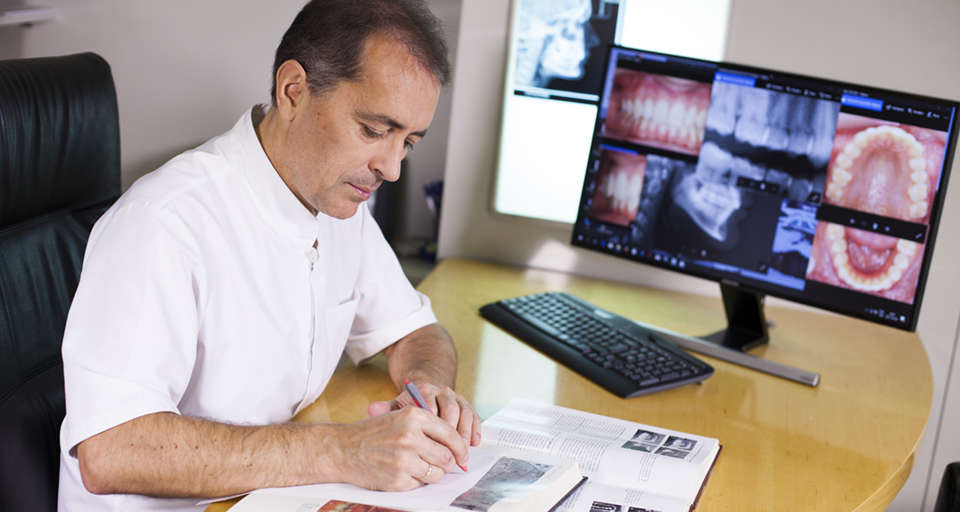Gingival labial recessions and the post-treatment proclination of mandibular incisors.
Written by admin on October 30, 2015
Eur J Orthod. 2015 Oct;37(5):508-13. doi: 10.1093/ejo/cju073. Epub 2014 Dec 5.
Renkema AM(1), Navratilova Z(2), Mazurova K(2), Katsaros C(3), Fudalej PS(4).
Author information:
(1)*Department of Orthodontics and Craniofacial Biology, Radboud University Medical Centre, Nijmegen, The Netherlands.
(2)**Department of Orthodontics, Palacky University, Olomouc, Czech Republic and.
(3)***Department of Orthodontics and Dentofacial Orthopedics, University of Bern, Bern, Switzerland.
(4)**Department of Orthodontics, Palacky University, Olomouc, Czech Republic and ***Department of Orthodontics and Dentofacial Orthopedics, University of Bern, Bern, Switzerland Piotr.Fudalej@zmk.unibe.ch.
INTRODUCTION: A prerequisite for development of gingival recession is the
presence of alveolar bone dehiscence. Proclination of mandibular incisors can
result in thinning of the alveolus and dehiscence formation.
OBJECTIVE: To assess an association between proclination of mandibular incisor
and development of gingival recession.
METHODS: One hundred and seventeen subjects who met the following inclusion
criteria were selected: 1. age 11-14 years at start of orthodontic treatment
(TS), 2. bonded retainer placed immediately after treatment (T0), 3. dental
casts and lateral cephalograms available pre-treatment (TS), post-treatment
(T0), and 5 years post-treatment (T5), and 4. post-treatment (T0) lower incisor
inclination (Inc_Incl) <95° or >100.5°. Two groups were formed: non-proclined (N
= 57; mean Inc_Incl = 90.8°) and proclined (N = 60; mean Inc_Incl = 105.2°).
Clinical crown heights of mandibular incisors and the presence of gingival
recession sites in this region were assessed on plaster models. Fisher’s exact
tests, t-tests, and regression models were computed for analysis of inter-group
differences.
RESULTS: The mean increase of clinical crown heights (from T0 to T5) of
mandibular incisors ranged from 0.75 to 0.83mm in the non-proclined and
proclined groups, respectively (P = 0.273). At T5, gingival recession sites were
present in 12.3% and 11.7% patients from the non-proclined and proclined groups,
respectively. The difference was also not significant (P = 0.851).
CONCLUSIONS: The proclination of mandibular incisors did not increase a risk of
development of gingival recession during five-year observation in comparison
non-proclined teeth.
© The Author 2014. Published by Oxford University Press on behalf of the
European Orthodontic Society. All rights reserved. For permissions, please
email: journals.permissions@oup.com.
DOI: 10.1093/ejo/cju073
PMID: 25481921 [Indexed for MEDLINE]




